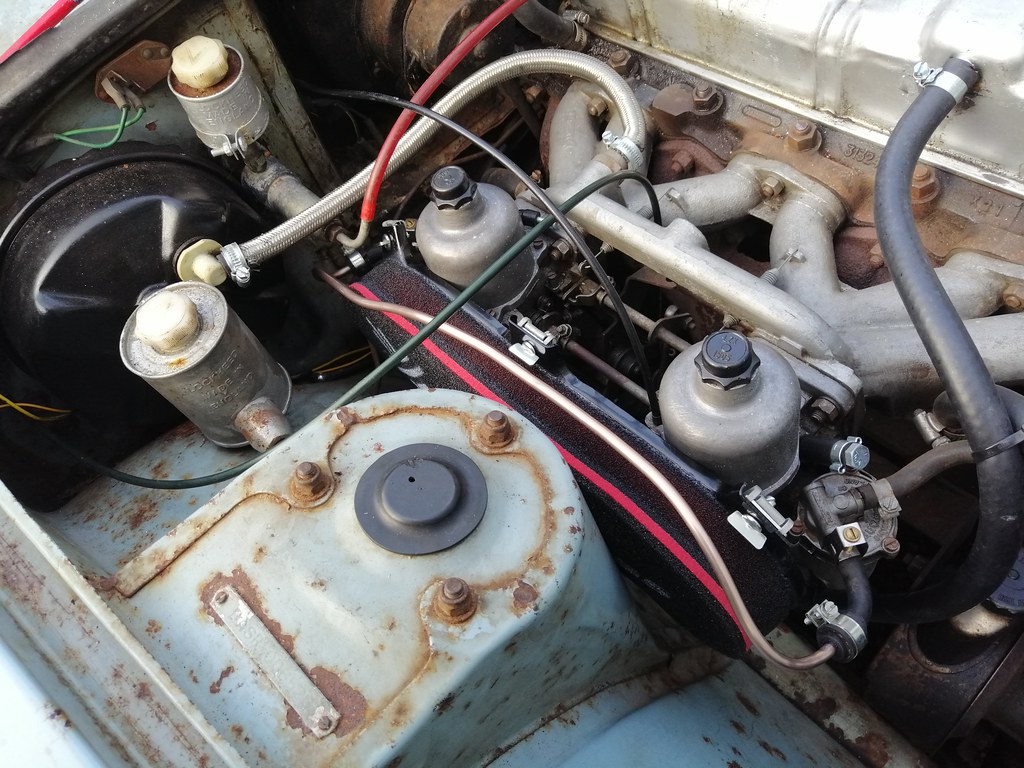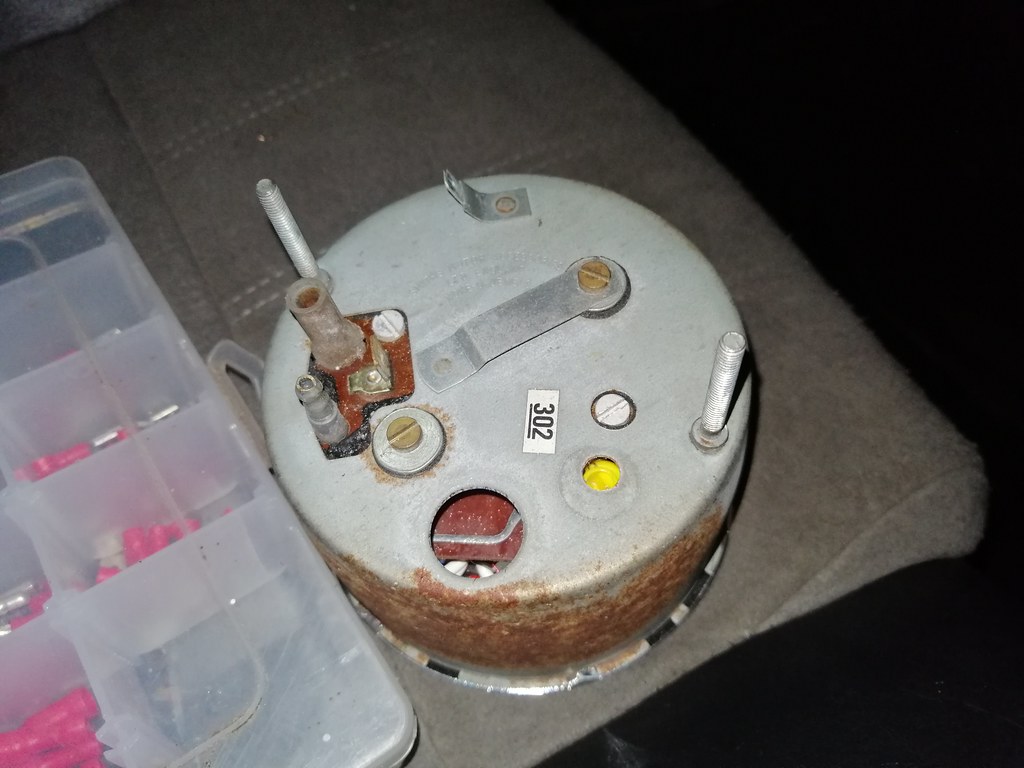So, a while back I managed to snag a second Rover 2600 engine which was going cheaply as it's seized. Low mileage, but the car looked like it had been dredged up from the bottom of the ocean so who knows what it's like inside. It did however come with an LT77 5-speed which if the engine turns out to be completely shot would go nicely behind the 2.5PI in the Spitfire.

 External dimensions
External dimensionsFirst thing's first, does it stand a chance of fitting where a Triumph OHC does?

Seems like it might! Despite it being OHC, it's near as damnit the same height from the shallow end of the sump up to the top of the head (21" vs 20"). Looking at the diagrams this is because the oil pump pickup runs along the RH side of the sump, with the LH side being 20" deep. Not sure if there's much you can do about that, but 1" difference is pretty close! If it's really critical, slanting it over towards the shallower side would help.
The head's a little wider (6" right at the top vs 4" for the OHV), and the distributor sticks out sideways (14.5" from centreline, 1" down from top of head) which won't help clear a GT6 bonnet, but Ford EDIS is much nicer anyway. Slanting the engine over would also help with that as it would drop the distributor lower.
The height at the deep end of the sump is 0.5" higher than the Triumph OHC (slightly deeper sump), but that's rarely an issue. Length-wise it's not too bad either: 28" from gearbox plate to front pulley vs 27" for the OHV. Haven't checked the length of the head though as that seems longer, although including the thermostat on the OHV would equlise it a bit. Length from the gearbox plate to the deep bit of the sump seems good as well (13" vs 12.25" for the OHV). There's a possibility it might fit in the space that a Triumph 6 came out of...
If you use a short remote on an LT77 the gearboxes even come out at roughly similar lengths to the gearstick pivot (22" vs 23" for the saloon overdrive 'box).
Engine design - overview
In all honesty, it looks really good. Alloy head SOHC 2.3l and bigger 2.6l. Proper crossflow head with good valve angle allowing decent sized valves. Nice deep-skirted block which should be pretty rigid. Comes attached to an LT77 which is a solid gearbox for the sort of torque we're looking at. Be good to look a little closer though as a lot of engines look good on paper.
Engine design - lower endNot a great deal to fault with the crankshaft. Only 4 main bearings again, but the crank is made of a half-decent metal (EN16B) and is a bloody massive construction. 70mm main bearings, 50.5mm conrod bearings and just look at those crankshaft webs! Might have issues with high revs just due to the weight of the thing, but you're unlikely to break anything otherwise.

The conrods began life as Dolomite Sprint ones, but the big ends were made larger (presumably to keep stiffness in the crank). This pays dividends when you look at the crankpin overlap which is a healthy 18.4mm on the longer stroke 2600 (22.4mm for the 2300). Compare that to the BMW M20B25 and M30B30 which have 15mm and 14mm respectively. They can get away with that as they've got 7 main bearings, but it goes to show that even with a longer stroke and 4 main bearings the 2600 crank should be pretty beefy.
Compared to other 4-bearing cranks it's good as well. The old Triumph 2.0l is 15.2mm and the 2.5 is a paltry 5.7mm (explains why they don't like to rev above 6000rpm!), and the BMC C-Series has 11.1mm. The most comparable though is the Mercedes M123 as another 4-bearing crank that wasn't a late-stage evolution of a post-war engine. That's 17.7mm, so the Rover should be beefier than that all things being equal.
Here's some diagrams to show what crankpin overlap is, shamelessly stolen from this
excellent article.


One of the few compromises I've found in the basic design of the engine is the conrod length. It's a bit short at 130.17mm, which combined with the long stroke means that you get a pretty unfavourable rod-to-stroke ratio (1.55). The commonly accepted ideal is somewhere around 1.8, which helps reduce piston acceleration for high revs and reduces your rod angle for less frictional losses, but avoids unfavourable dwell times at TDC when you go for even longer ratios. The lower end of acceptable seems to be 1.5 so the 2600 just about skirts above that (the 2.5 OHV is 1.54). Saying that, it's not the end of the world as lots of successful (and high revving) engines have 'poor' rod-to-stroke ratios. A brace of Honda engines have 1.58, and the long stroke M30B34 has 1.57. Plus, there are benefits to low rod ratios, especially in turbo applications. They produce high exhaust gas velocity due to the piston speed as it approaches TDC, and the piston shooting away again after ignition helps tolerate high compression ratios without knock. Plus, it means we can have a long stroke, an overhead cam and keep eveything the same height as the OHV 6!
Pistons in the 2600 are decent steel-belted Mahle jobs with beefy 23.817mm gudgeon pins so they should be able to tolerate the increased forces of the low rod ratio too
 Engine design - top end
Engine design - top endAll seems well at the top end too. The valvegear is a derivative of the Dolomite Sprint head with a single camshaft lobe operating directly on the intake valve, and via a rocker for the exhaust.

This helps keep a good 45 degree valve angle, but reduces valvetrain inertia compared to, say, the BMW M10/M30 pictured below. BMW managed a 45 degree valve angle with a SOHC by using 2 set of rockers. The Triumph way of doing things does have drawbacks though as you're limited with your inlet and exhaust cam timing, but most engines had symmetrical valve timing at that point in time anyway. Also, the Triumph/Rover engine will have more cam wear as the same lobe is acting on both valves.
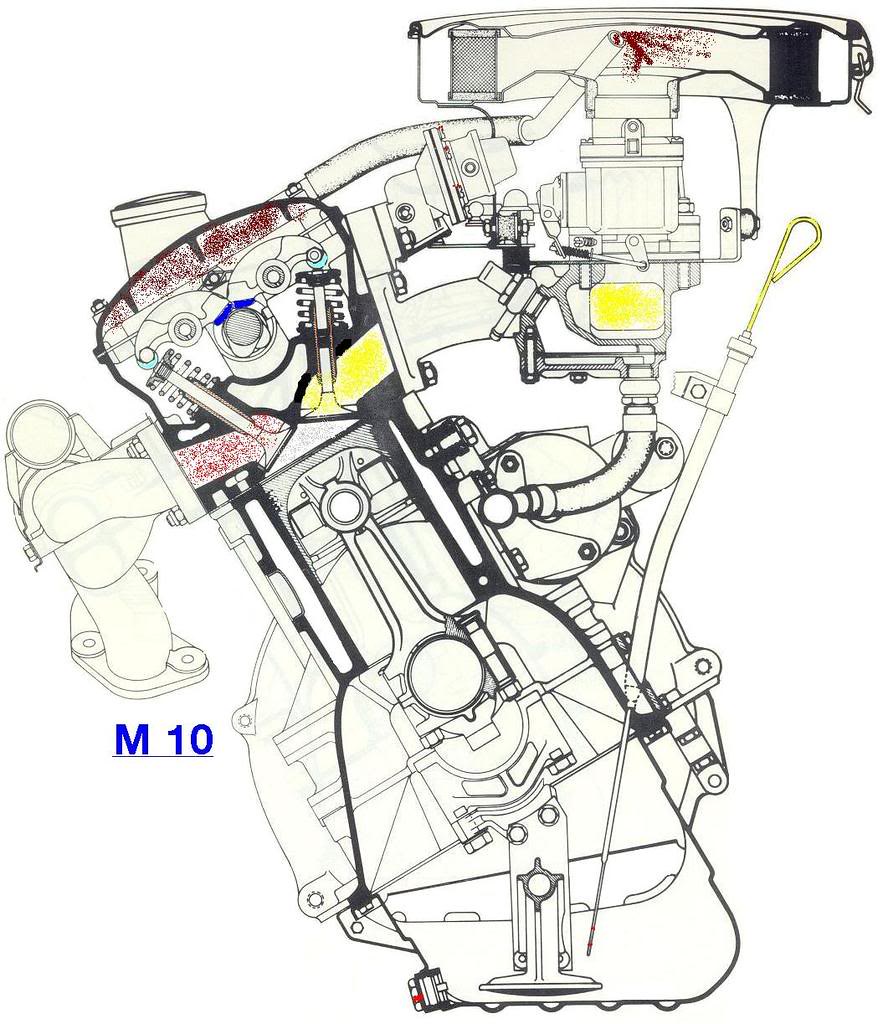
You can also see from the diagram that the port design is pretty good as well. Nice straight shot to the well-sized 42mm inlet valve. Exhaust port is a bit less ideal, but not too bad at all either (and the valve is similarly well sized at 35.6mm). The sharp edge right on the short side radius of the exhaust might be a little tricky to sort without having valve seat issues, but that's what having multiple engines is for I suppose...
Straight shot to the inlet valve confirmed on my dead engine:

I've done a quick comparison between some known good 12v 6-cyl engines of similar displacement, using some of the rules of thumb from
this website. If that's anywhere near accurate, then you're aiming for a 0.7-0.8 ratio of exhaust to inlet valve size, a port that's about 0.85x the size of the valve, and a 0.53ish ratio of inlet valve to bore diameter.

The port itself is a little small compared to wisdom at the time (31.5mm). The M20B25, Alfa 12v V6, and even the 2.5 OHV all have bigger ports (both absolutely and in relation to their inlet valves). A smaller port will offer more velocity which tends to help with a plump torque curve, but even still the Rover's ports are a bit on the small side. It should be said that modern manufacturers are leaning much more towards smaller ports and higher velocities to get power and efficiency out of modern engines, but I'm not sure where current thinking lies with respect to the Rover ports (I suspect not enough people have thought about it to produce any current thinking). The inlet valve seems reasonably sized, as does the exhaust valve in relation to it.
Lastly, the Rover 2.6 combustion chamber is split between the head chamber and a dish in the piston. Looks like there's ample squish area which should help with efficient combustion on a 2v engine.

 The issues start creeping in...
The issues start creeping in...The issue is that all of this added up to an engine that came uncomfortably close to the output of the Rover V8 in testbed engines (151bhp vs 155). As BL lacked the funds to squeeze more power out of the V8, the 2.6 got hobbled. Both the 2300 and 2600 got the same cam (a decent 0.444" valve lift, but a mild 238deg duration). You can also see from the head diagram above that the inlet manifold is noticeably smaller bore than the already-small inlet port (verifid on my engine). This was done to help port-matching when manufacturing, but can't help top end power much.
There were some reliability issues as well. There's a restrictor in the oiling system to stop the head being flooded with oil. Unfortunately, there's a split pin in this restrictor that likes to get gummed up with sludge and starve the head of oil, seizing the cam. There were also issues with a lack of exhaust manifold gaskets in early cars (supposedly made redundant by careful machining of the faces, but clearly it didn't catch on).
So what might we do with it?As a starter for 10, you can whip out the split pin from the oil restrictor like lots of BL mechanics did back in the day. Add a set of exhaust manifold gaskets and you've cured pretty much all the reliability issues.
Next up would be to sort the cam. As far as I know there aren't any hot cams about for these cars so you'd either need to regrind a stock cam or have one made from a billet (I have a stock cam to test this out eventually). With this you should have a healthy 151bhp which is more than a stock injected TR6 engine (141bhp net). But a 2.0 or 2.5 OHV will happily get to 180bhp, so why bother breaking new ground at great expense if you're not going to beat that?
Few people seem to have developed the 2600, but I've come across a
racecar that makes 190bhp with a half-decent manifold and triple webers which is pretty respectable, but still within the reach of a really good OHV engine.
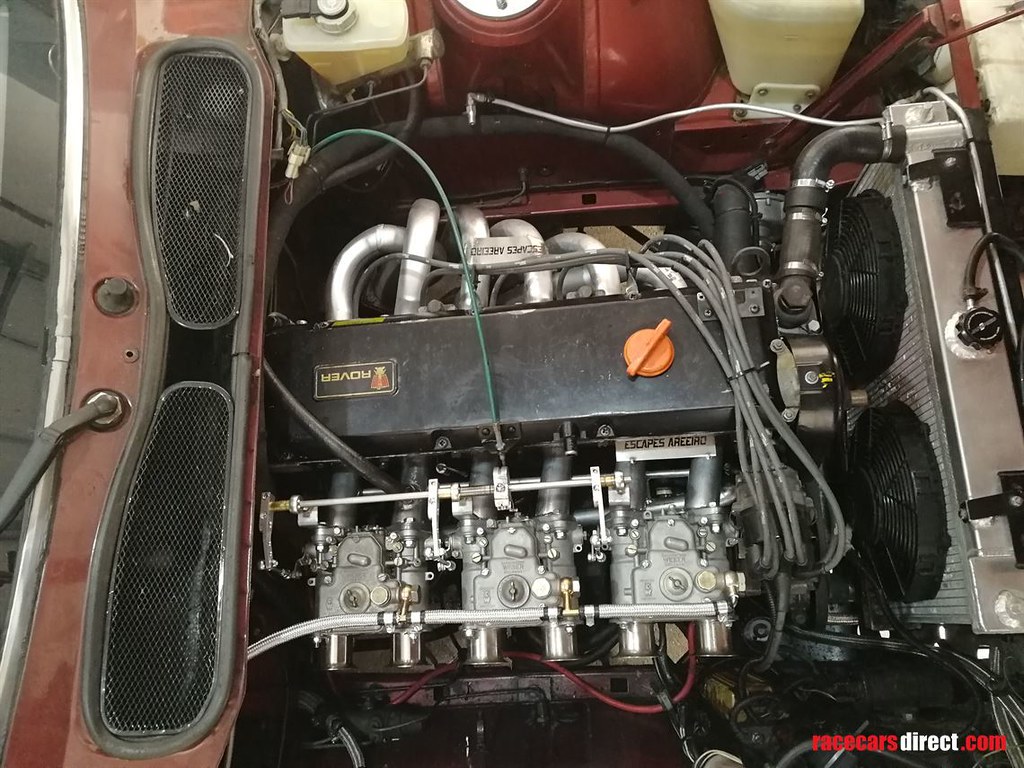
The chap mentions that you should be able to get 230bhp out of it with a few tweaks which is really very good for a 2.6l 2v. I've since managed to get in contact with the him and he's since sold the car, but he recalled that the workshop who did the cam did it to an old Austin Healey 3000 race profile. The closest one to that description I've found is the old factory 1622 race profile (same as the modern Newman PH4), which is a 300 duration 48-72-72-48 profile which seems pretty racey. So it sounds like it might be possible to regrind the factory cam to those sorts of specs...
PortingOne of the interesting things I've come across while looking at head porting is making D-shaped ports.
This chap has had great success on Yamaha XS650 motorbikes with it, and it seems like a lot of modern manufacturers are using similar techniques.


The principle behind it is to expand the area of the short-side radius to equalise the velocity of the air between the lower and upper portions of the port. This means you get less turbulence between the slow and fast moving air in a round port and the whole port flows better for a given size, meaning you can use a smaller port to achieve your flow and have really good velocity.
The results speak for themselves (these figures are for a physically smaller port than the original).

With the XS650 (and most cars I'd assume), you need to build up the floor of the port with epoxy to reduce the size of the d-port. It's definitely doable (JB Weld is apparently perfectly good for the job), but it's an added hassle. However, with the 2600's teeny-tiny ports it's probably feasible to just square off the bottom of the port and leave it as-is. Stock port area is 7.8cm², D-port would be about 8.5cm². Compare that to the M20B25 and Alfa V6 which both have 10.5ish cm² ports for a similar valve size and it looks promising
 Go big or go home
Go big or go homeSo, to justify using the engine instead of the tried and true OHV I need some sort of way to get much more power out of it. It's possibly to squeeze 200bhp out of the OHV so we'd like to significantly exceed that if possible.
The block looks pretty meaty compared to the OHV, so boring would be a definite option.

The water galleries between the bores don't help with this, but I managed to pick up a workshop manual for not very much money at all. In it there's a procedure for fitting liners if an engine needs it, which involves boring out the block to 84.25mm to press liners in. So there must still be at least some thickness to the bores left after that, meaning we might just be able to fit an 84.45mm piston in a standard block.
Cue about a week of sifting through piston catalogues and forums searching for pistons of the right bore and compression height, with a moderate sized dish to keep the compression ratio about right. There's still a fair bit of estimation as I havn't cc'd the 2600 pistons yet, but I reckon I'm pretty close with measurements.
The easiest option seems to be fitting MG Maestro/Montego Turbo O-Series pistons directly to the stock rods. 84.45mm bore, 0.15mm taller compression height meaning they'll stick out of the bore ever so slightly helping with squish, same 23.815mm floating gudgeon pin arrangement, 9.1:1 compression and 2.8l. As close to plug and play as you can get! The only issue is the pistons are pretty hard to come by these days (I've managed to snag two maestro turbo short blocks after a fair bit of searching, but one has had some valve contact so is less than ideal).
Option 2 is to use NA O-Series 2.0l pistons which are the same bore, 0.2mm taller compression height (need to deck this down to sort the compression ratio), but they use a smaller 20.638mm non-floating gudgeon pin. To get this to work you'd need to either bore the pistons out for the bigger pin, bush the rods for the smaller pin, or do both and go for a modern 21mm pin and have loads of options. Gets you to 2.8l, but with 9.6:1 compression (tailorable by decking the pistons less than 0.2mm).
2.8l with a nicely flowing head should be able to get to 230bhp without too much issue (80bhp/l-ish).
While we're looking at desktop exercises...As I was bored, I got to thinking 'just how big might you be able to go...'
TR7 pistons fit a 90.3mm bore, and you can get liners for them. Measured a 2600 headgasket and they seem to have an even 96mm bore spacing (which sadly rules them out for an OHC swap for the old OHC engine). They might end up being wet liners in some parts, but you could possibly squeeze them in. If you use the US-spec TR7 pistons they've got a ~12cc dish which should fit nicely with a bigger displacement. The only issue is that the compression height is 1mm less than the Rover pistons so that would need sorting.
Took a long time to work this out, but Subaru EZ30D rods are 1.39mm longer than the Rover ones. The big end is a bit too big, but if you hone the conrods out ever so slightly for some Chevy LX3 main bearings you can get a big 1.5mm undersize which just about steps it down to the Rover's crank size (50.49mm bearing vs 50.5mm crank). That should get you a 3.2l I6 with 10.7:1 compression.
But you might be able to go bigger!
If you can fit TR7 liners, you can fit 30 thou over TR7 pistons. You can also offset-grind the crank a little for more stroke seeing as they have solid pin overlap. You can't quite make up the 1mm compression height difference of the TR7 pistons on stock bearing oversizes, but it turns out that Datsun L24 rods are near as damnit the same length as the Rover ones. They also have 49.9685mm big ends which means you can comfortably offset grind 1.0815mm to make up nearly all of the comression height and increase the stroke to 86.163mm.
91mm bore x 86.163mm stroke gives you 3365cc, which just about gets rounded up to 3.4l! That would be a monster engine in any Triumph.
























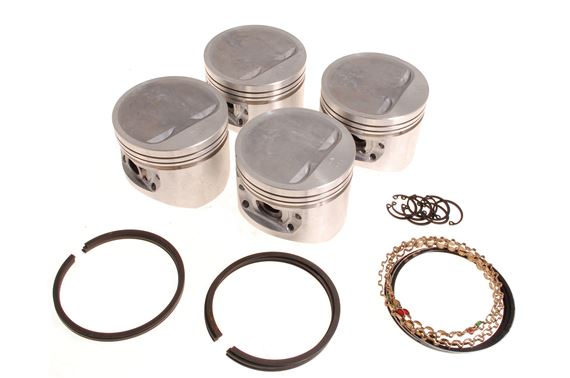



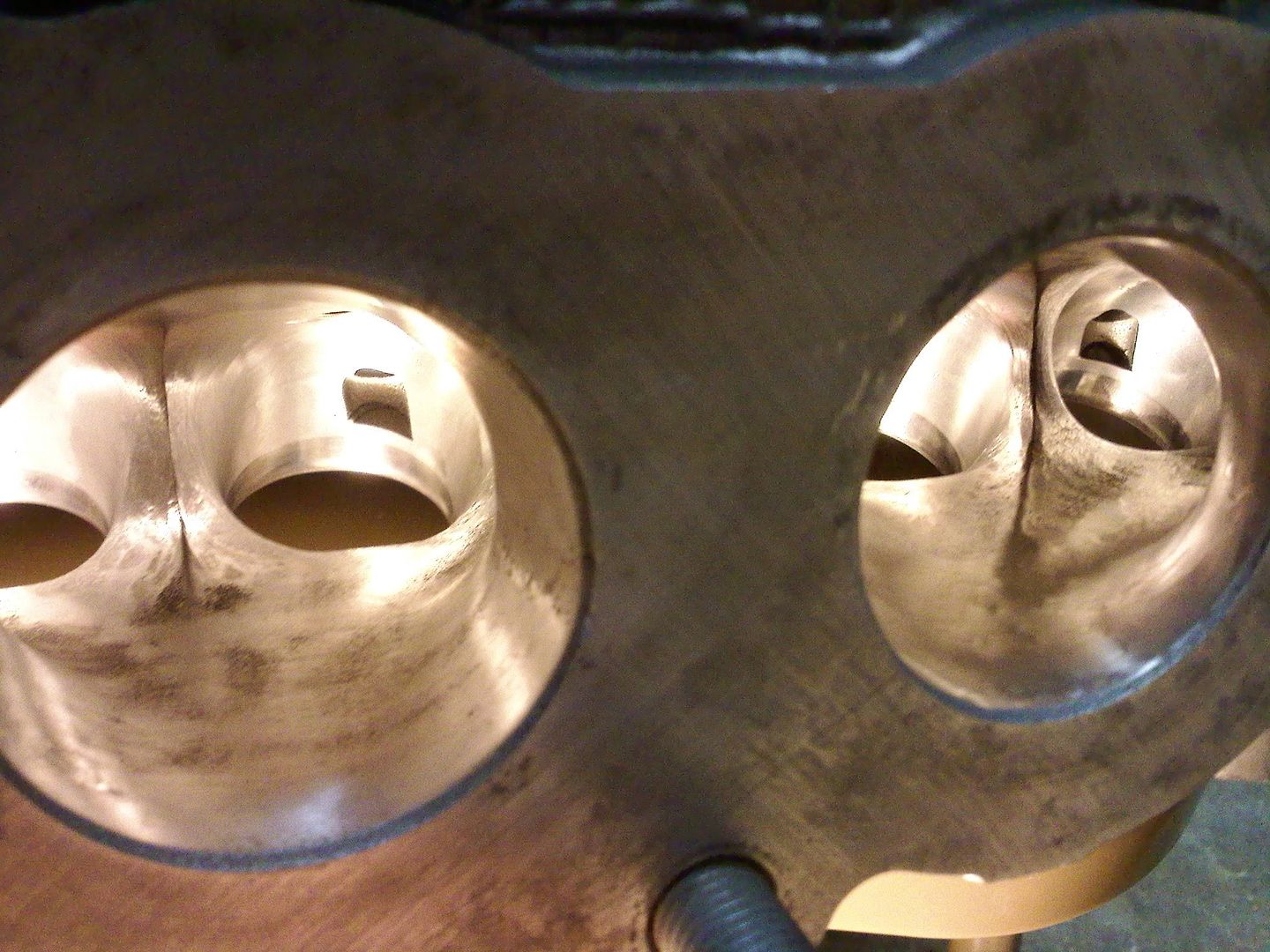
 I always approach things from a financial perspective and all the effort you throw at a 2600 would just be dead money. For more power just bolt a turbo onto it. You can still have a play with porting as it has all the same benefits but pistons rods cams boring liners stroking ! A cheap turbo install just trumps it all. If you have more than one engine you just wind up the boost until you find the limits - then start again.
I always approach things from a financial perspective and all the effort you throw at a 2600 would just be dead money. For more power just bolt a turbo onto it. You can still have a play with porting as it has all the same benefits but pistons rods cams boring liners stroking ! A cheap turbo install just trumps it all. If you have more than one engine you just wind up the boost until you find the limits - then start again.
